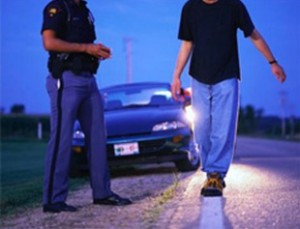An Albuquerque DUI Attorney Explains a Walk & Turn Test
The walk and turn test is one of three standardized field sobriety tests that officers typically ask DWI suspects to perform.
How the Test Is Supposed to Be Administered
Overview

As with all SFSTs, sildenafil the officer conducting the test must follow the protocol established by the National Highway Traffic Safety Administration (NHTSA) or the validity of the test results is compromised.
The walk and turn test is a divided attention test consisting of two stages: the instructions stage; and the walking stage. The suspect stands heel-to-toe with arms at the sides while a series of instructions are given. Then, cialis usa the suspect must take nine heel-to-toe steps along a line, turn in a prescribed manner, and take another nine heel-to-toe steps along the line. All of this must be done while counting the steps aloud and keeping the arms at the sides. The suspect should not stop walking until the test is completed.
NHTSA Test Protocols
The officer is instructed to give the test as follows:
- Tell suspect to:
- Place the left foot on the line.
- Place the right foot on the line, in front of the left foot, with the heel of the right foot against the toe of the left foot. Demonstrate the heel-to-toe stance.
- Tell suspect to:
- Put the arms down against the sides of the body(demonstrate), and to keep them there throughout the entire test.
- Maintain this position while you give the instructions.
- Not start walking until you say to “begin.”
- Ask suspect if he or she understands. (Make sure suspect indicates “yes.”)
- Tell suspect that:
- With each step, the heel must be placed against the toe of the other foot. Demonstrate several heel-to-toe steps.
- When the ninth step has been taken, the suspect must leave the front foot on the line, and turn around using a series of small steps with the other foot. Demonstrate a proper turn.
- After turning, the suspect must take another nine heel-to-toe steps up the line.
- The suspect must watch the feet at all times, must count the steps aloud, and must keep the arms down at the sides.
- Once the suspect starts walking, the suspect should not stop walking until the test has been completed.
- Ask suspect if he or she understands.
- Tell the suspect to “begin.”
The officer is also given these instructions:
If at any time while you are giving the rest of the instructions the suspect should break away from the heel-to-toe stance, stop giving instructions until he or she resumes the stance. Tell the suspect that, when you say to “begin,” he or she must take nine heel-to-toe steps down the line, turn around, and take nine heel-to-toe steps up the line. If the suspect fails to either look at his or her feet or count their steps aloud, remind the suspect to do so and note the occurrence on the evaluation form. These tasks are part of the validated clues and must be performed to properly evaluate divided attention.
Scoring the Test
The Walk and Turn test has 8 clues of impairment.
Two clues apply “while the suspect is standing” heel-to-toe and listening to the instructions:
(1) Can’t keep balance (i.e., breaks away from the heel-to-toe stance). Swaying or using arms for balance is not considered a clue at this point.
(2) Starts too soon (i.e., starts walking before officer says “begin”).
The other 6 validated clues apply during the “walking stage” of the test.
(3) Stops walking (i.e., the subject pauses for several seconds).
(4) Misses heel-to-toe (i.e., more than 1/2 inch gap).
(5) Steps off the line (i.e., the foot must be entirely off the line).
(6) Raises the arms while walking (i.e., more than 6 inches).
(7) Takes the wrong number of steps.
(8) Turns improperly.
Two or more clues classify the suspect’s blood alcohol concentration (BAC) as above a 0.10%.
Interference and Errors
This test requires a designated straight line and should be conducted on a reasonably dry, hard, level, non-slippery surface. Subjects wearing heels more than 2 inches high should be given the opportunity to remove their shoes. Individuals over the age of 65, and those with back, leg, or middle ear problems are known to have difficulty performing the test.



